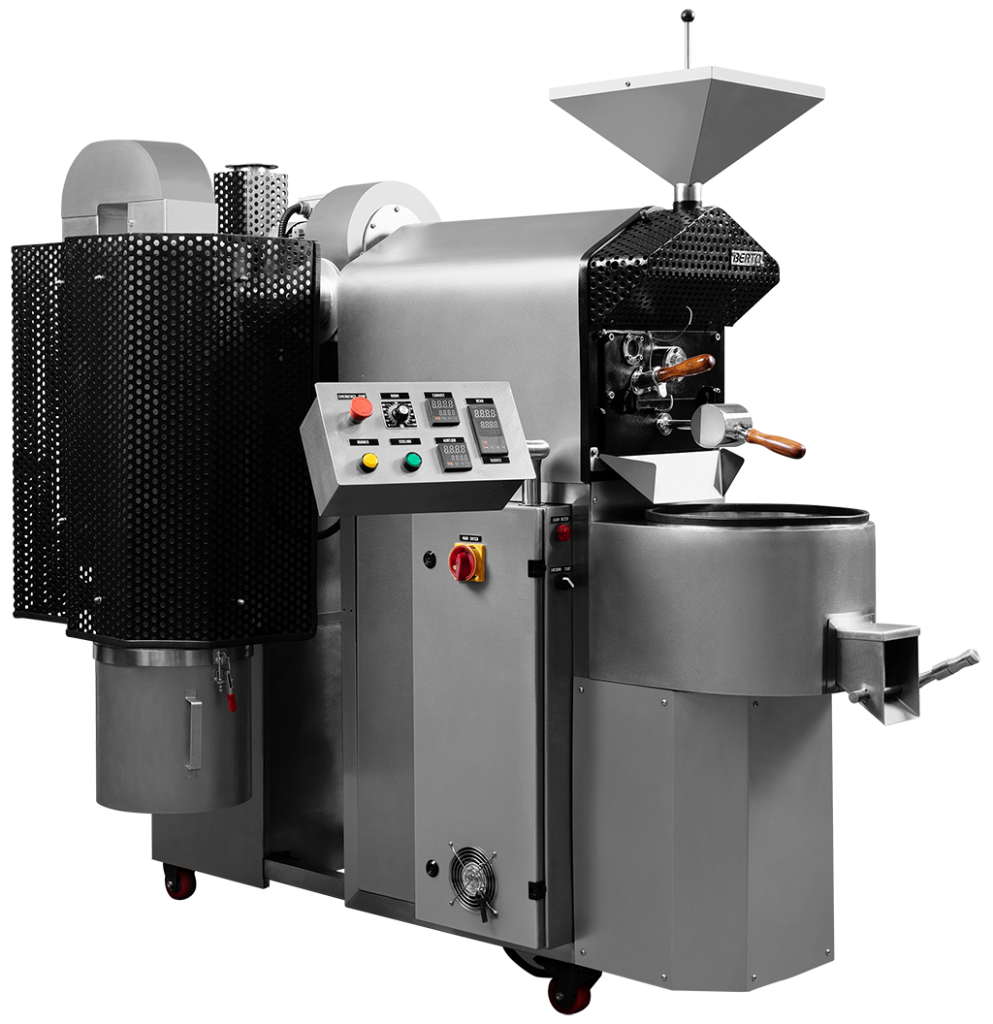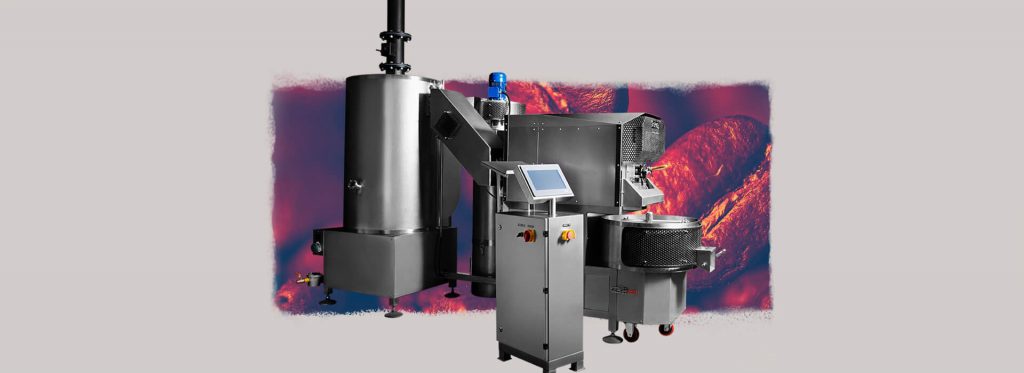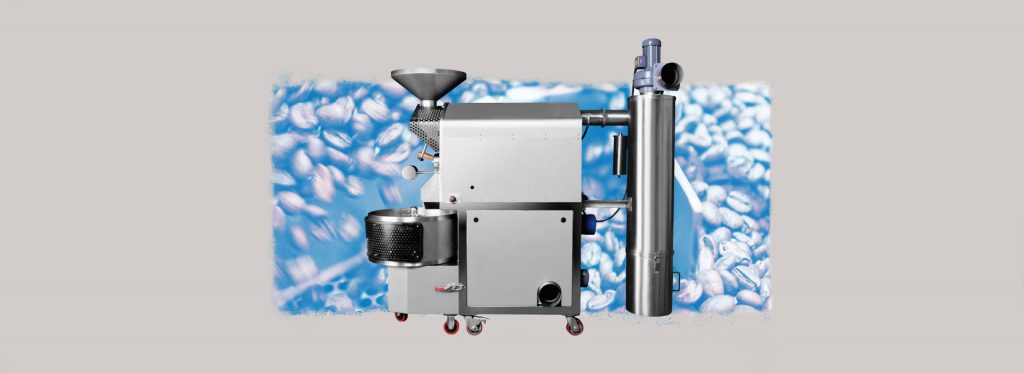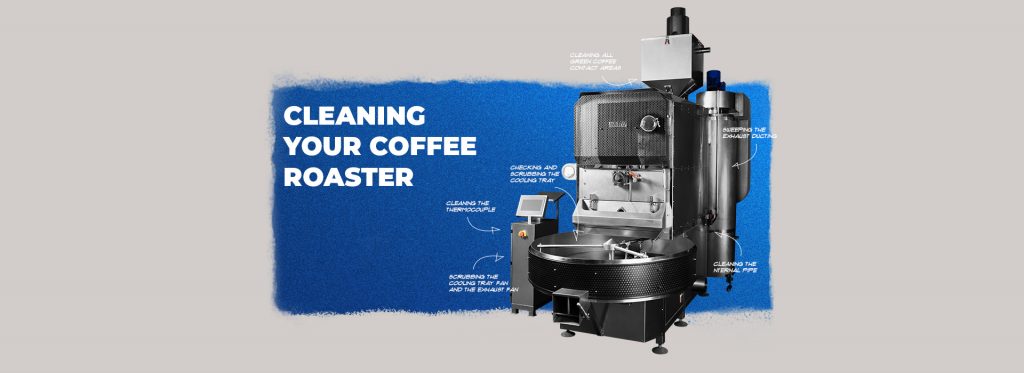5 Must-Have Coffee Roasting Kits for In-House Coffee Roasting
More cafes are taking the next step in their coffee journey by roasting in-house. This shift is driven not only by rising and unpredictable roasted coffee prices but also by a growing desire for greater control over roast quality and flavor profiles. By managing the process internally, roasters can fine-tune each batch to match their unique flavor profile and maintain a more stable cost structure.
If you’re planning to start roasting in-house, your first priority should be investing in the right tools. Reliable coffee roasting equipment ensures that your process is safe and consistently delivers high-quality results over time. In this guide, we’ll walk you through five must-have coffee roasting kits that every in-house operation should consider.
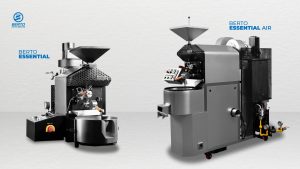
Tool #1: A Reliable Compact Coffee Roasting Machine
The roasting machine is the heart of every in-house roasting operation. It’s the coffee roasting equipment that transforms raw green beans into the rich, aromatic coffee that defines your cafe’s identity. Before choosing your first roasting machine, it helps to understand the two main types of machines used in the industry: drum roasters and hot air roasters.
- Hot air roasters rely entirely on convection to move heat evenly around the beans. With no direct contact with hot surfaces, each bean receives uniform heat exposure. This prevents roast defects and uneven development, leading to a cleaner cup with bright, distinct flavors that highlight the bean’s natural acidity and character.
- Drum roasters use a combination of conduction and convection heat. Beans are roasted through direct contact with the rotating drum, as well as from hot air circulating inside the chamber. This slower roasting method encourages deeper flavor development and a fuller body, often resulting in rich, rounded cup profiles.
If you’re starting to roast in-house, a compact, reliable coffee roaster can help you maintain consistency from batch to batch while fitting comfortably into a smaller space.
Meet Berto Essential Air and Berto Essential Coffee Roaster
Berto Essential Air is your ideal match if your flavor vision leans toward a cleaner cup. With a 3 kg capacity and a 100% hot air roasting system, it stands as the world’s smallest commercial smokeless coffee roaster. Its advanced system significantly reduces smoke emissions and air pollution, creating a safer and more environmentally conscious roasting environment.
Berto Essential is a smart entry point into drum roasting. This compact 1 kg roasting machine combines a sleek design with precise control, giving you full control to craft rich, full-bodied flavors. It also delivers both dependable performance and peace of mind with a safety regulator as well as ignition and burner safety controls.
Tool #2: Roasting Probes for Monitoring Temperature
Temperature is one of the most critical variables that shape the final flavor of your coffee. Even a few degrees can make the difference between a balanced roast and one that tastes flat or burnt. To track temperature accurately, roasting probes are the tools that monitor both bean and air temperature throughout the roast. These measurements help you understand how heat is moving inside the drum and give you more control over the process.
Roasting probes typically read Bean Temperature (BT) and Environmental Temperature (ET), giving you real-time data to fine-tune your roast. These readings are also key to tracking the Rate of Rise (RoR), which shows how quickly the beans are heating up during the roasting process.
Within Berto’s roaster lineup, Berto Essential includes built-in BT and ET probes with digital indicators, along with an automatic BT setting that maintains temperature during preheating. Berto Essential Air, on the other hand, is equipped with sensors that monitor bean, exit air, inlet air, and drum surface temperatures, giving coffee roasters more comprehensive data for precise temperature control and consistent results across batches.
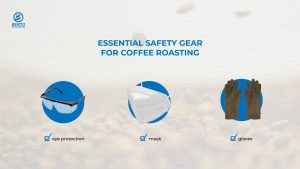
Tool #3: Personal Protective Equipment for Safer Roasting
Safety is an important part of running a roastery. Coffee roasting exposes operators to high temperatures and smoke that can cause serious harm without the right protective equipment. One accidental touch on a hot surface can lead to painful burns and long-term injury. Heat-resistant gloves should be included in any in-house setup to help reduce those risks.
Choose gloves that are rated for high-heat environments, ideally made from aramid fibers like Kevlar or Nomex. Look for extended cuffs to protect the wrists and lower arms. Features like textured palms or silicone coatings also help maintain a strong grip when lifting metal parts or handling freshly roasted beans.
Along with gloves, other personal protective equipment (PPE) or safety gear like heat-resistant aprons, long tongs, protective masks, and eye protection can reduce exposure to smoke and airborne particles. Masks are especially important, as roasting may release compounds like diacetyl, which could affect respiratory health. Consider using a high-quality, well-fitted respirator such as a KN95 to reduce the risk of inhaling harmful vapors during long roasting sessions.
Tool #4: Cooling Tray and Chaff Collector
After the beans reach their target roast level, they need to be cooled immediately to stop further roasting. Residual heat may continue to cook the beans, which can lead to darker, bitter flavors or what’s commonly known as carryover roasting. A cooling tray with fans or a perforated mesh surface helps reduce the temperature quickly and preserves the final flavor and aroma.
A chaff collector removes the thin, papery skin that separates from the beans during roasting, especially near the first crack. If left to build up, coffee chaff can block airflow and settle in hot areas, which increases the risk of fire. Berto Essential includes a high-efficiency cyclone system with a chaff collection container that directs this material away from ignition points. But remember to perform regular cleaning, as chaff can accumulate over time and pose a hazard if left unchecked.
Tool #5: Bean Storage and Logging Tools
Freshly roasted coffee needs time to rest before it reaches peak flavor. During this period, the beans release carbon dioxide (CO₂) in a process known as degassing. Brewing too soon can lead to uneven extraction and muted flavors. Resting the beans for several days allows CO₂ to escape, but improper storage can speed up staling. Oxygen, light, moisture, and heat all contribute to flavor loss, so it’s important to use airtight, opaque containers or vacuum-sealed canisters to preserve quality.
Roast tracking is just as important for maintaining consistency. Whether you use software or a notebook, logging details such as time, temperature, airflow, and cupping notes helps build repeatable roast profiles. Berto Essential Air and Berto Essential come with the Playback Assist™ feature, which automatically records gas and airflow changes through your computer. This makes it easier to match flavor outcomes across batches.
Choosing the right coffee roasting kit sets the stage for safe and consistent results, especially for cafes starting their in-house roasting journey. Berto Essential Air and Berto Essential are designed with integrated roasting tools and built-in safety features to deliver reliable results across batches and support safe day-to-day operation. Start building your roastery with professional coffee roasting equipment you can trust. Contact us today to find the perfect roasting machine for your in-house setup.



